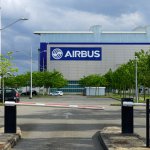
Honeywell suggests using connnected tech to transform our skies. Source: Shutterstock
Honeywell says connected tech can make airlines better
FLIGHT delays are something that cost airlines a lot of money — and although customers aren’t often able to take the airline to court for delays, the experience seriously hampers customer loyalty and lifetime value.
According to a report from T2RL and Amadeus, the estimated cost of flight disruption to airlines amounts to 8 percent of airline revenues — worth US$60 billion worldwide.
Unfortunately, according to experts, airlines operating in the APAC are under tremendous pressure to avoid delays — because of the rising pressures, bad weather, and other mechanical factors.
“The Asia Pacific has some of the most treacherous flying and landing conditions in the world – our climates are so varied, weather conditions unpredictable, and geographical limitations so wide that even the best pilots need full attention and careful precision when flying in the region,” said Honeywell APAC Commercial Aviation Senior Director Sathesh Ramiah.
“Some of the biggest contributors to flight delays are weather and downtime due to unforeseen maintenance. By leveraging the right technologies, airlines can predict and work to address these issues before the flight is impacted and its effects snowball.”
Ramiah is, of course, referring to the connected ecosystem that modern aircraft and airlines have built, and advises that those ecosystems be leveraged to combat flight delays entirely.
According to the Honeywell veteran, airlines should leverage their ecosystem to build a predictive maintenance tool that helps staff fix aircraft problems before they occur.
Further, he suggests tapping into the ecosystem to increase operational efficiency, improve fleet management, ensure flight safety, and reduce aircraft turnaround time — ultimately providing passenger satisfaction.
Cathay Pacific is an example that Ramiah often cites when asked how connected systems can help airlines.
Through a pilot program at Cathay Pacific, Honeywell has demonstrated how connected systems can improve the first-time fix rate and reduce the workload of technical services team and front-line support executives.
“There was a 35 percent reduction in operational disruptions with a less than one percent false positive rate, saving the airline several hundred thousand dollars in operations and reactive maintenance costs per aircraft.”
“With reduced bottom lines from cost savings on maintenance as well as reliable and on-time flights, connected technologies benefit the entire ecosystem — including both airlines and passengers.”
At the end of the day, Ramiah is confident that more airlines will be exploring how connected systems can help them reduce delays and deliver better experiences in the coming months. The technology is here, and the market seems ready.
READ MORE
- Strategies for Democratizing GenAI
- The criticality of endpoint management in cybersecurity and operations
- Ethical AI: The renewed importance of safeguarding data and customer privacy in Generative AI applications
- How Japan balances AI-driven opportunities with cybersecurity needs
- Deploying SASE: Benchmarking your approach




